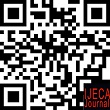Heavy Equipment Education 2.0 Development as an Android-Based Learning Space
Abstract
The pandemic period of covid-19 is a difficult time for students and teachers, especially in the vocational high school students. One of the difficulties faced by students is learning online from home while many students do not have internet access. So developed an android application that can be accessed online and offline to help students in learning from home. The purpose of this research is to create a product in the form of android-based learning media that is valid, practical, and effective, so as to help the learning process during the Covid-19 pandemic. This application was then named Heavy equipment Education 2.0. This research is a development research that uses four-D method (define, design, development, disseminate) as the development method. From the research that has been done, it can be concluded that Heavy equipment Education 2.0 application is valid as a learning medium with a validity value of 0.94. Heavy equipment Education 2.0 application. practicality with a practicality score by the teacher of 91.5% while the practicality score by the student is 90%. As for its effectiveness value, Heavy equipment Education 2.0 application. able to improve student learning outcomes 97%.
Keywords
Full Text:
PDFReferences
Adawiyah, R., Sukaryawan, M., Reaksi, M. L., & Lima, K. (2019). Pengembangan Modul Laju Reaksi Berbasis Konstruktivisme Lima Fase Needham. Jurnal Penelitian Pendidikan Kimia, 6(1), 18–24.
Amir, H. F., Huda, A., & Maksum, H. (2020). Development of Mobile Learning for Simulation and Digital Communications. In Journal Of Education Technology (Vol. 1, Issue 3).
Asmariani. (2016). Konsep Media Pembelajaran PAUD.
Denia, A., Mandailina, V., & Al Musthafa, S. (2018). Pengembangan Lks Matematika Menggunakan Pendekatan Problem Solving Pada Materi Aritmatika. Pendekar : Jurnal Pendidikan Berkarakter, 1(1), 214. https://doi.org/10.31764/pendekar.v1i1.361
Domenico, L. Di, Pullano, G., Coletti, P., Hens, N., & Colizza, V. (2020). Expected impact of school closure and telework to mitigate COVID-19 epidemic in France. Epicx-Lab.Com, 1–15. www.epicx-lab.com/covid-19.html]
Fitra, J., & Maksum, H. (2021). Efektivitas Media Pembelajaran Interaktif dengan Aplikasi Powntoon pada Mata Pelajaran Bimbingan TIK. JP2, 4(1), 1–13. https://www.powtoon.com.
Ganefri. (2019). Panduan-Tesis-Disertasi-Revisi-20191.
Hindun, I., HUsamah, H., Nurwidodo, N., Fatmawati, D., & Fauzi, A. (2021). E-Learning in COVID- 19 Pandemic : Does It Challenge Teachers ’ Work Cognition and Metacognitive Awareness ? 14(3), 547–566.
Makarim, N. A., Qoumas, Y. chlil, Sadikin, B. gunadi, & Karnavian, muhammad titio. (2021). KEPUTUSAN BERSAMA.
Maksum, H., & Lapisa, R. (2020). Developing Energy Conversion Teaching Material Based on Discovery Learning Model Through Scientific Approach. Jurnal Pendidikan Dan Pengajaran, 53(3), 114–124.
Mulyono, A., Azizah, D., & Fatih ’adna, S. (2021). Pengembangan Media Pembelajaran Berbasis Android Dalam Bentuk Buku Saku Digital Materi Sistem Persamaan Linear Dua Variabel Kelas X.
Netriwati. (2019). Media Pembelajaran Matematika. https://www.researchgate.net/publication/332935226
Rifdarmon, R. (2018). Pengembangan Simulator Engine Trainer Integrated Active Wiring Diagram untuk Meningkatkan Efektifitas Pembelajaran Pada Mata Kuliah Listrik dan Elektronika Otomotif. INVOTEK: Jurnal Inovasi Vokasional Dan Teknologi, 18(1), 31–38. https://doi.org/10.24036/invotek.v18i1.156
Wahyono, P., Husamah, H., & Budi, A. S. (2020). Guru profesional di masa pandemi COVID-19: Review implementasi, tantangan, dan solusi pembelajaran daring. Jurnal Pendidikan Profesi Guru, 1(1), 51–65. http://ejournal.umm.ac.id/index.php/jppg/article/view/12462
Wijaya, T. T., Purnama, A., & Tanuwijaya, H. (2020). Pengembangan Media Pembelajaran Berdasarkan Konsep Tpack pada Materi Garis dan Sudut Menggunakan Hawgent Dynamic Mathematics Software. JPMI – Jurnal Pembelajaran Matematika Inovatif, 3(3).
DOI: https://doi.org/10.31764/ijeca.v4i2.5144
Refbacks
- There are currently no refbacks.
Copyright (c) 2021 Hasan Maksum, Hannyka Febriano

This work is licensed under a Creative Commons Attribution-ShareAlike 4.0 International License.
IJECA (International Journal of Education and Curriculum Application) already indexed:










___________________________________________________________________
| |
____________________________________________________________________
IJECA Publisher Office:







.jpg)




